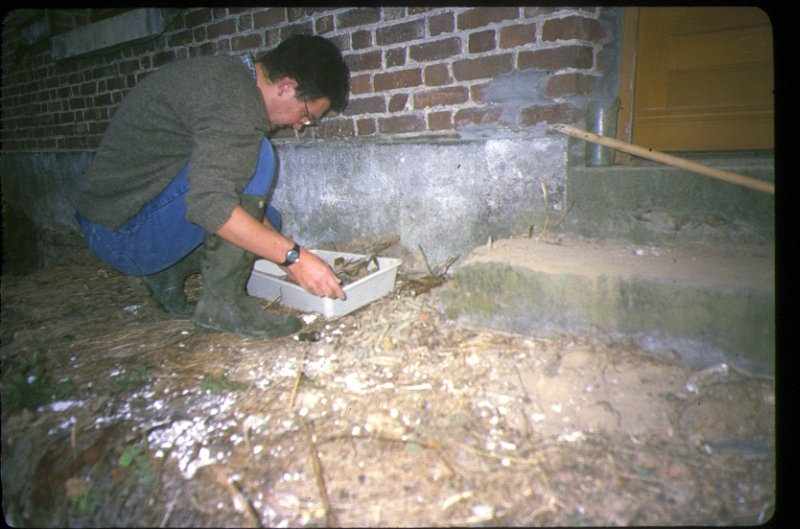 Finds
sorting, 1997
Finds
sorting, 1997
As is to be expected when cutting a section, few finds were recovered, however an attempt was made to make sense of finds from the previous uncontrolled excavation. A single fired .303 round was found whilst cleaning back the section, on the churned surface in phase D. Taking into account the rest of the sequence, and the known history of the site this may represent evidence of action associated with the German advance of 1918. A single Lebel round was recovered from the drain channel under the brick/tile floor. Although this looked like an unfired round it turned out to be a fired round reused to make a pencil. Although the round indicates French occupation and activity it is not possible to say whether the pencil was made by a French soldier or civilian, or by a British soldier. A total of 30 unfired rounds of .303 ammunition were recovered whilst cleaning back the section. A minimum of 301 unfired rounds of .303 ammunition was identified as having been recovered from the trench in the uncontrolled excavation. This makes a minimum of 330 rounds discarded in a maximum of 10 meters of communication trench, or 33 rounds per meter. Even allowing for the possibility that more rounds might be discarded close to a dugout entrance this is a very high loss rate, and should mean that figures for rounds of ammunition expended during any action, or the whole war, need to be considered carefully. |